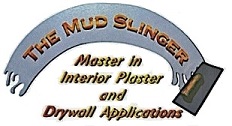Level 1:
all joints and interior angles shall have tape set in joint compound, tool marks and ridges are acceptable.
Frequently specified in plenum areas above ceiling, in attics, in areas where the assembly would generally be concealed or in building service corridors, and other areas not normally open to public view. Accessories optional at specifier discretion in corridors and other areas with pedestrian traffic.
Some degree of sound and smoke control is provided; in some geographic areas this level is referred to as “ fire-taping.” Where a fire-resistance rating is required for the gypsum board assembly, details of construction shall be in accordance with reports of fire tests of assemblies that have met the fire-rating requirement. Tape and fastener heads need not be covered with joint compound.
Level 2:
All joints and interior angles shall have tape embedded in joint compound and wiped with a joint knife leaving a thin coating of joint compound over all joints and interior angles. Fastener heads and accessories shall be covered with a coat of joint compound. Surface shall be free of excess joint compound. Tool marks and ridges are acceptable. joint compound applied over the body of the tape at the time tape embedment shall be considered a separate coat of joint compound and shall satisfy the conditions of this level.
Specified where water-resistant gypsum backing board (ASTM C 630) is used as a substrate for tile; may be specified in garages, warehouse storage or other similar areas where surface appearance is not of primary concern.
Level 3:
All joints and interior angles shall have tape embedded in joint compound and one additional coat of joint compound applied over all joints and interior angles. fastener heads and accessories shall be covered with two separate coats of joint compound. all joint compound shall be smooth and free of tool marks and ridges. Note: it is recommended the the prepared surface be coated with a drywall primer prior to the application of final finishes.
Typically specified in appearance areas which are to receive heavy- or medium-texture (spray or hand applied) finishes before final painting, or where heavy-grade wall coverings are to be applied as the final decoration. This level of finish is not recommended where smooth painted surfaces or light to medium wall coverings are specified.
Level 4:
all joints and interior angles shall have tape embedded in joint compound and two separate coats of joint compound applied over all flat joints and one separate coat of joint compound applied over interior angles. fastener heads and accessories shall be covered with three separate coats of joint compound. All joint compound shall be smooth and free of tool marks and ridges. Note: it is recommended the the prepared surface be coated with a drywall primer prior to the application of final finishes.
This level should be specified where flat paints, light textures, or wall coverings are to be applied.
In critical lighting areas, flat paints applied over light textures tend to reduce joint photographing. Gloss, semi-gloss, and enamel paints are not recommended over this level of finish.
The weight, texture and sheen level of wall coverings applied over this level of finish should be carefully evaluated. Joints and fasteners must be adequately concealed if the wall covering material is lightweight, contains limited pattern, has gloss finish, or any combination of these finishes is present. Unbacked vinyl wall coverings are not recommended over this level of finish.
Level 5:
all joints and interior angles shall have tape embedded in joint compound and two separate coats of joint compound applied over all flat joints and one separate coat of joint compound applied over interior angles. fastener heads and accessories shall be covered with three separate coats of joint compound. a thin skim coat of joint compound trowel applied or a material manufactured especially for this purpose and applied in accordance with manufacturer’s recommendations shall be applied to the entire surface. the surface shall be smooth and free of tool marks and ridges. Note: it is recommended the the prepared surface be coated with a drywall primer prior to the application of final finishes.
This level of finish is highly recommended where gloss, semi-gloss, enamel, or flat paints are specified or where severe lighting conditions occur.
This highest quality finish is the most effective method to provide a uniform surface and minimize the possibility of joint photographing and of fasteners showing through the final decoration.
Level 6:
Taped seams only then Rod and Feather edge to achieve a fully flat surface with no waves or shadows. Then corner trim is applied then finish ready for painting.
